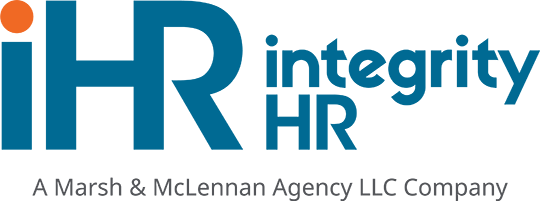Our human resources consultants get a lot of calls and questions about the flu, usually regarding specific scenarios taking place in the offices and work sites of our clients. In an effort to help others be prepared to address these issues before they happen, we’ve put together a list of commonly asked questions and their answers.
Can we as the employer tell other employees if a colleague has been diagnosed with H1N1? We feel that they should know if they have had exposure.
There are very valid arguments on both sides of the fence regarding whether or not to disclose this information. Officially, the EEOC has determined that an employer must treat H1N1 like any other medical diagnosis and may not disclose the information to most employees. Exceptions permitted include supervisors so that supervisors can implement any necessary work restrictions for employee safety, and first aid personnel if any exist on staff. If the employee discloses the information him or herself to colleagues, of course, the disclosure would not be covered by the prohibition.
That said, an employer may be able to sufficiently argue that failure to disclose the information is a direct threat to the health and safety of coworkers and customer who had direct contact with the infected employee, especially if anyone is in the group considered to be at a higher risk of infection. Since most employers learn about the diagnosis directly from the employee or the employee’s family, rather than from the administrator of the health insurance plan, the information would not be protected under HIPAA, and employers could argue that failure to disclose would be a violation of OSHA general standards for protecting the health and safety of their workforce.
Ultimately, because the EEOC has taken the stance it has, employers who disclose the information are doing so at their own risk.
We have an employee who is out with H1N1 and says she caught it from another employee who was out sick with it first. She says that she should be covered by workers’ compensation because she caught it at work. Is that right?
Because workers’ compensation is governed by state law, you should check with your state counsel regarding their guidance. However, as a general rule,most laws are going to require that an employee have proof that he or she contracted the illness at their place of work or in the course of duty of their employment. There is not a way to specify point of origin for H1N1 to prove where it was contracted — whether at work, at church, or at the grocery store — so there would not be a valid way to make a claim for workers’ compensation.
Do we have to fill out an OSHA First Report of Injury?
Common flu and colds are exempt from record keeping requirements, and at this time there is nothing from OSHA to indicate that H1N1 is to be treated differently than the common flu. At this time, OSHA has not made a statement regarding H1N1 specifically, so one may assume it will at this time be treated the same as the flu. Many states have similar plans to OSHA, however, so you should also be prepared to follow their requirements as well.
Can we send home an employee who has symptoms of H1N1?
Yes, you may. We recommend alerting employees via a memo or a posting that employees who exhibit the specific symptoms should not report towork and should advise their supervisor that they need to go home if they begin having the symptoms while they are at work. Also advise them that they will be sent home by management if they exhibit the symptoms and do not leave voluntarily, and that these measures are taken as a precaution to protect the entire workforce. When putting the practice in place, of course, you want to be certain that you are not discriminating based on any particular characteristic such as gender, race, age, etc.
If an employee has been out with H1N1 and is now feeling better, when should we let them come back to work?
The CDC is recommending that for general business settings, employees should stay out of work for at least 24hours after no longer having or exhibiting signs of a fever without the aid of a fever reducing medicine. Since the flu typically runs a course of seven days, employers may wish to require a minimum absence period, provided it is applied consistently. If an employee returns to work more than 24 hours after no longer having a fever but in less than seven days after the onset of the illness, they should continue to practice a heightened level of respiratory etiquette and hand washing.
Should we require a doctor’s note for verification of H1N1?
While it is an unfortunate truth that there are those employees out there that will use this pandemic as an excuse for a few free days off, employers are discouraged from requiring employees to provide doctors notes for H1N1 absences. First, most individuals who contract the illness will recuperate without medical intervention and will not require a visit to the doctor and are therefore encouraged to stay at home, reducing further exposure to the general public. Second,many medical facilities will not have the equipment necessary to verify H1N1 specifically and will be diagnosing based upon symptom and will be unable to provide a certifiable diagnosis. If you are going to require a note to excuse an absence, you will need to require it of everyone to excuse an absence.
Can we require employees to use paid time off for H1N1 absences?
Yes, subject to your policies for paid time off, state law, and any employment contracts in a union environment.
What if they have used up all their PTO? Can we dock their pay?
Yes, if they are a non-exempt employee – you only pay them for the hours worked.
If they are exempt, and the employee requested the absence, you may dock them only for full day absences. If they are exempt, and the employer required the absence, you may dock them only for a full week absence. Bear in mind, though, that it is always risk to dock an exempt employee’s pay, and you must be certain that they are not doing any work while they are away from the office, including answering phone calls, emails,or text messages relevant to work.
With all of these absences, what do we do with our attendance policy and discipline? We have a progressive point systems for absences.
In consideration of the massive number of employees in the workforce affected by H1N1, employers are urged to forgo strict enforcement of attendance policies for H1N1 illnesses. This flu season is causing enough disruption to American business and families without the added stress of disciplinary action. Additionally, with so much of the workforce absence due to illness, businesses can’t afford to start terminating them as well once they reach the limit on their progressive discipline. Employees will also start to hide their H1N1 condition as best that they can and report to work sick instead of staying home so that they will not have absences that risk discipline. While there are some that will abuse this temporary policy waiver for H1N1, it will be for the greater good of the majority of employees and businesses.
Please call us with questions you have, or what special circumstances surrounding H1N1and flu season have come up in your office or workplace. This epidemic has potential business ramifications unlike any we’ve seen in our nation in decades. We may not beable to help with a fever, but we can reduce the headaches – by having the knowledge to make decisions before being confronted with the problems, you will face fewer business interruptions, and that gives everyone more peace of mind in the midst of a crisis.
Submitted by Paula Agee, SPHR; Senior Consultant with Integrity HR, Inc.











